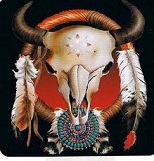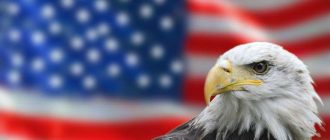Interested in Native American buffalo art? Find out about the significance of the buffalo and its depiction in Native American Art…
The Native Americans attached particular reverence to the buffalo. The buffalo was taken as a symbol of the many bounties that life has to offer. This was because the buffalo was a source of many benefits to the Native Americans.
The Native Americans would drink and eat from the buffalo. They would also use its hide to create clothing. Native American buffalo art basically has two aspects. One has to do with making use of different parts of the buffalo to create various works of art. The other has to do with featuring the symbol of the buffalo to honor the animal through art work.
Use of the Buffalo in Native American Art
As mentioned above the Native Americans made use of different parts of the buffalo’s body in different ways. The skull for example was used in religious ceremonies and prayer rituals. It was also featured in the sun dance.
Similarly the horns of a buffalo were used in many different ways. They were used to serve many practical purposes such as cups, spoons, ladles, powderhorn, fire carrier and signals. The natives even used the horns to make extremely attractive headdresses for the warrior class.
The tongue of the buffalo was considered to be the best part of the meat to eat. The Natives also made use of the beard of the buffalo to adorn their apparel and weapons in different ways. The rawhide of the buffalo was used in the making of headdresses and medicine bags. They would even use it as a base for shields. Moccasin soles were also made out of rawhide. The material was also used to create the skin of drums. Horse masks, lance cases, horse forehead ornaments and belts were also made using rawhide.
In the same way buckskin was used to create the top side of moccasins as well as bedding, winter robes, shirts, dresses, leggings and breechclouts. They would even use buckskin to develop paint bags, pipe bags, tipi covers, cradles, lance covers and even dolls.
Even the hoof and feet of buffalos had a practical function. They served as raw material for the preparation of glue. The same were also used to make rattles. While they would eat all the meat from different parts of the buffalo’s body they would use its four chambered stomach to develop remedies for various illnesses.
The bladder of the buffalo was used to stitch sinew pouches, small medicine bags and quill pouches. The paunch served as lining for cups, buckets, dishes and basins. The skin of the hind legs was also used to create moccasins and boots. The tail was utilized as a fly brush and was also used in the development of lodge exterior decorations.
The bones were used to make arrow heads and other tools like shovels, winter sleds, splints and saddle trees. The hair was another important item used in the preparation of headdresses, ornaments, halters and medicine balls.





